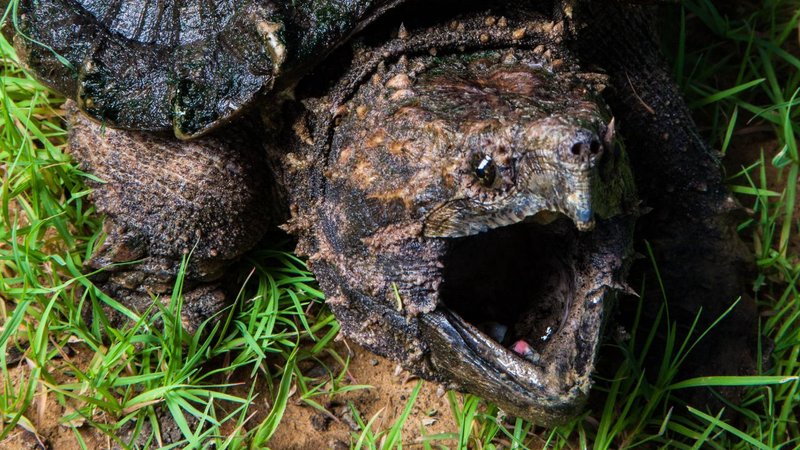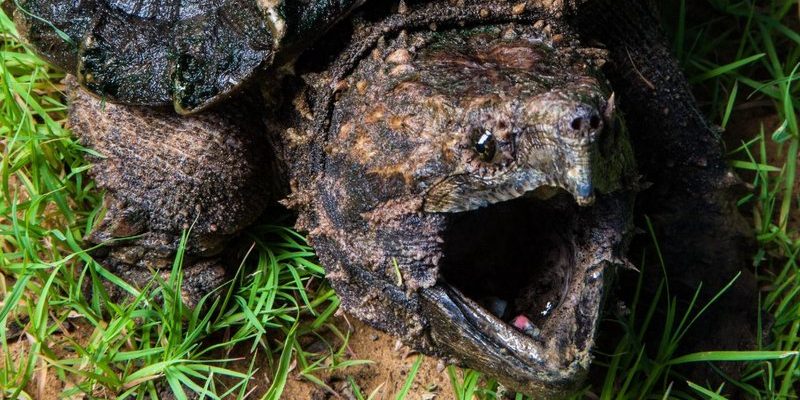
So, how do these amazing reptiles manage to stay alive where many other species struggle? It’s not just about tough skin; it’s about clever adaptations and behaviors that help them get by. Let me explain what makes snapping turtles such resilient creatures, and perhaps you’ll find yourself looking at them in a whole new light.
Adaptations for Extreme Temperatures
Snapping turtles are masters of temperature tolerance. They can be found in both warm and cold waters, which is quite a feat for any animal. In colder climates, these turtles go into a state called brumation, similar to hibernation. When the temperatures drop, their metabolism slows down, allowing them to conserve energy and survive without eating for several months. It’s like hitting the pause button in a video game until conditions improve.
Imagine being stuck in a cold, dark ice bath for months and still coming out just fine. That’s pretty much what snapping turtles do! They bury themselves in the mud at the bottom of lakes or rivers, where the temperatures are a bit more stable, waiting for warmer days to return. This strategy not only helps them endure harsh winters but also keeps them safe from predators.
Astonishing Feeding Habits
You might be surprised to learn that snapping turtles are opportunistic omnivores. Their diets are as varied as the environments they inhabit. They munch on a mix of plants, insects, fish, and even small mammals when the opportunity arises. Think of them as the ultimate scavengers—they’ll eat whatever is available!
This flexibility in eating habits is crucial for survival. During lean times, like in winter or droughts, their ability to adapt their diet allows them to find food sources that others might overlook. Need an example? Imagine the time a snapping turtle stumbled upon a feast of fallen fruit during autumn—a rare treat that helped it store fat for winter.
Unique Defensive Strategies
When faced with threats, snapping turtles don’t just rely on their heavy shells. They have a clever set of defensive strategies to protect themselves. Their first line of defense is that intimidating jaw. Those powerful bites can deliver a painful lesson to any curious predator. But that’s not all. Snapping turtles are also quite stealthy and can remain hidden under murky waters for long periods.
When they feel threatened, they often try to blend in with their surroundings. Their dark, camouflaged shells help them disappear into the muddy riverbeds. This ability to stay still and unnoticed is fascinating; it’s like being a master of hide-and-seek! Think about it: In the wild, sometimes hiding is just as effective as fighting.
Breeding and Nesting Resilience
Breeding is another area where snapping turtles showcase their toughness. They often lay their eggs in sandy or loose soil near water. This is where resilience plays a key role. To ensure their offspring have the best chance of survival, females may lay anywhere from 20 to 50 eggs at a time. It’s like planting a garden; they gamble on quantity over quality, knowing that not all eggs will make it.
However, these turtles also face challenges during this process. Rainstorms can wash away nests or predators can dig up the eggs. To cope with these threats, some female snapping turtles will nest in multiple locations, providing backup options for their young. This strategy showcases both their cleverness and commitment to survival.
Environmental Impact and Adaptation
The ecosystems where snapping turtles live are also quite affected by their presence. By consuming dead animals and decomposing plants, they’re like nature’s clean-up crew. This behavior not only helps maintain a healthy ecosystem but also plays a part in nutrient cycling.
You might be wondering how they manage to thrive even when their environments change due to pollution or habitat loss. Snapping turtles are incredibly adaptable. They’re known to shift their habitats or alter their diets based on availability. This adaptability means they’re more resilient to environmental challenges than many other species.
Conservation and Future Survival
While snapping turtles are tough, they still face threats from humans, pollution, and habitat destruction. Conservation efforts are crucial to ensure they continue to thrive in the wild. Creating awareness about their role in the ecosystem and implementing measures to protect their habitats can significantly help these ancient creatures.
Being part of this effort isn’t just about saving turtles; it’s about preserving the balance of nature. When we protect snapping turtles, we protect an entire ecosystem. It’s a big-picture approach to conservation that benefits us all.
In essence, the snapping turtle is a symbol of survival against the odds. Its ability to adapt to harsh environments, coupled with its unique feeding habits and defensive strategies, showcases its resilience. As we continue to learn about these fascinating creatures, it becomes clear that their survival is intrinsically linked to the health of our ecosystems.
So next time you see a snapping turtle, take a moment to appreciate its remarkable journey. These tough little survivors have a lot to teach us about resilience, adaptability, and the importance of caring for our natural world. By ensuring their existence, we also secure a small part of our environmental heritage—a legacy worth preserving.

